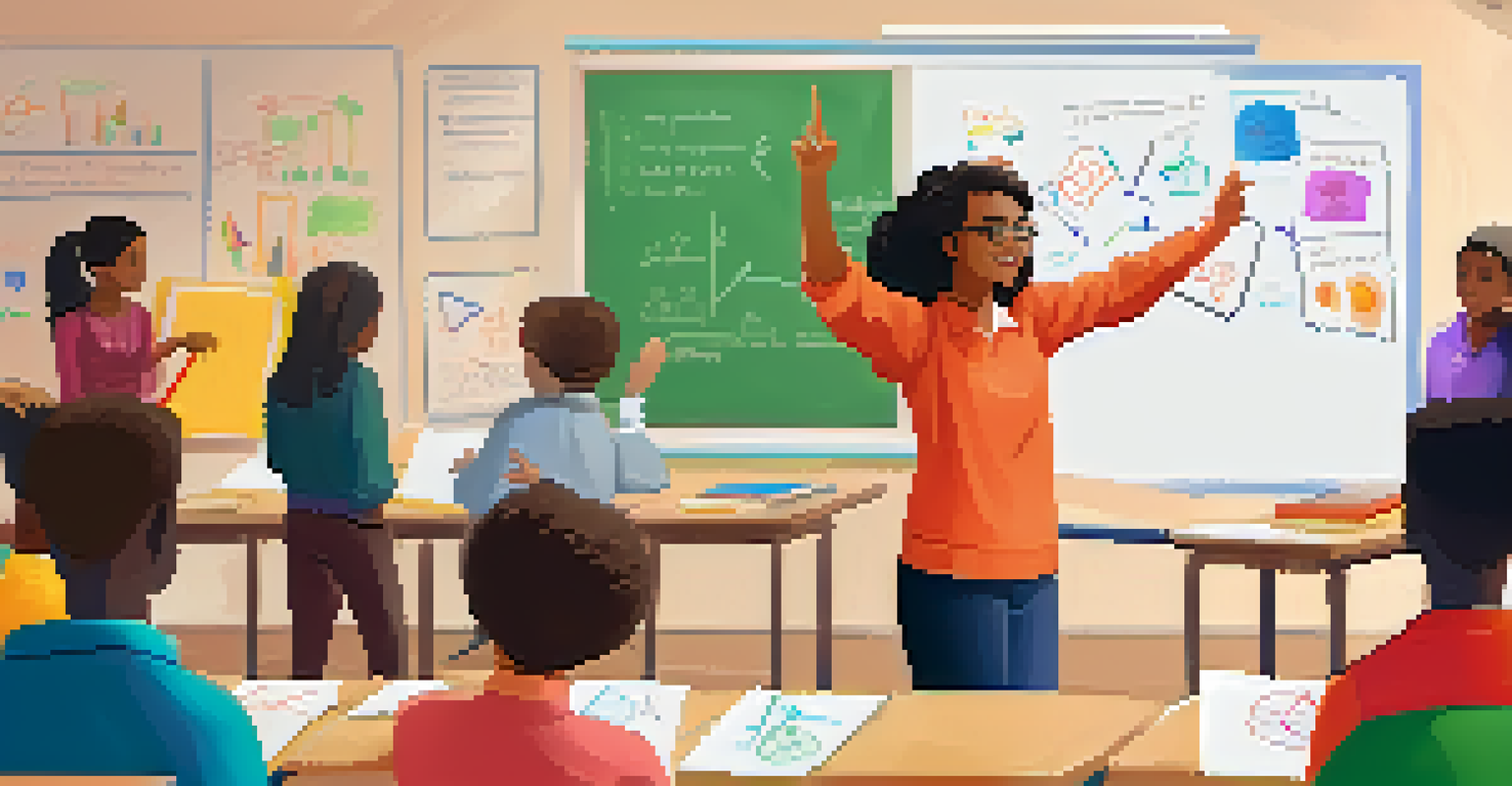The Impact of Project-Based Learning on Student Motivation

Understanding Project-Based Learning and Its Purpose
Project-Based Learning (PBL) is an educational approach that engages students in real-world projects. Rather than passively receiving information, students actively participate in their learning journey. This method encourages critical thinking, collaboration, and creativity, making learning more relevant and enjoyable.
Tell me and I forget, teach me and I remember, involve me and I learn.
In PBL, students work on projects that often span several weeks, which allows for deeper exploration of subjects. For instance, they might create a community garden, which integrates science, math, and social studies. This hands-on approach provides a sense of ownership over their learning, fostering greater motivation.
Ultimately, PBL aligns education with real-life skills, preparing students for future challenges. By focusing on problem-solving and teamwork, students not only learn academic content but also develop essential life skills, making education more meaningful.
Fostering Intrinsic Motivation Through Real-World Relevance
One of the key benefits of Project-Based Learning is its ability to foster intrinsic motivation among students. When students see the real-world relevance of their projects, they become more invested in their work. For example, designing a marketing campaign for a local business can ignite passion and creativity, as students understand the impact of their efforts.

This connection to the real world helps students see the purpose behind their learning. Instead of viewing assignments as mere tasks, they engage with the material more deeply, driven by curiosity and personal interest. This shift from extrinsic to intrinsic motivation is crucial for long-term learning success.
PBL Boosts Student Engagement
Project-Based Learning fosters intrinsic motivation by connecting students' projects to real-world relevance.
By engaging in projects that matter to them, students feel empowered and motivated to take charge of their education. This empowerment can lead to increased enthusiasm, resilience, and a desire to learn, ultimately enhancing their overall educational experience.
Promoting Collaboration and Social Skills in PBL
Collaboration is at the heart of Project-Based Learning, and it plays a significant role in enhancing student motivation. When students work together on projects, they learn to communicate effectively, share ideas, and resolve conflicts. This social interaction not only makes learning more enjoyable but also builds essential teamwork skills.
Learning is not the product of teaching. Learning is the product of the activity of learners.
For example, in a PBL setting, students might divide tasks based on their strengths, allowing them to contribute meaningfully to the project. This collaborative effort fosters a sense of community and belonging, making students more likely to stay engaged and motivated. They learn to rely on one another, which can strengthen their commitment to the project's success.
Furthermore, successful collaboration can lead to a sense of achievement that boosts self-esteem. When students see their collective efforts come to fruition, they experience a shared pride that reinforces their motivation to continue learning together.
Enhancing Problem-Solving Skills Through PBL
Project-Based Learning encourages students to tackle complex problems, enhancing their problem-solving abilities. Rather than following a set formula, students must think critically and creatively to find solutions. This hands-on approach allows them to experiment and learn from their mistakes, which is a vital part of the learning process.
For instance, if students are tasked with creating a sustainable energy plan for their school, they must research, evaluate options, and propose innovative solutions. This project not only teaches them about energy conservation but also nurtures their analytical skills and creativity, making the learning process dynamic and engaging.
Collaboration Enhances Learning
Working together on projects promotes essential social skills and builds a sense of community among students.
As students navigate challenges and develop solutions, they build resilience and confidence in their problem-solving abilities. This empowerment drives their motivation, as they recognize that they can make a difference through their efforts.
Encouraging Ownership of Learning in PBL Environments
A defining feature of Project-Based Learning is that it encourages students to take ownership of their learning. By allowing them to choose their projects or topics of interest, students feel more invested in the outcome. This autonomy fosters a sense of responsibility and commitment to their work, significantly boosting motivation.
For example, if students are allowed to select a social issue to address through their project, they are more likely to engage deeply with the subject matter. This choice empowers them to pursue topics they are passionate about, making the learning experience more enjoyable and relevant.
When students perceive their education as something they control, their motivation levels soar. They become active participants in their learning journey, which not only enhances their academic performance but also instills a lifelong love of learning.
The Role of Teacher Support in Project-Based Learning
While students take the lead in project-based learning, the role of the teacher is crucial for maintaining motivation. Teachers act as facilitators, guiding students and providing support when needed. This relationship helps create a safe learning environment where students feel comfortable exploring new ideas and taking risks.
For instance, a teacher might provide resources, feedback, or encouragement during a project, helping students overcome obstacles. This support not only enhances the quality of the projects but also reinforces student motivation, as they know they have a mentor to turn to for assistance.
Ownership Drives Motivation
Allowing students to choose their projects empowers them, significantly increasing their investment in their learning.
Moreover, teachers can inspire students by sharing their own experiences and passion for the subject matter. When students see their teachers genuinely engaged, it can ignite a similar enthusiasm within them, further boosting their motivation to learn.
Measuring the Impact of PBL on Student Motivation
Understanding the impact of Project-Based Learning on student motivation requires effective measurement strategies. Educators often use surveys, interviews, and observations to gauge student engagement and enthusiasm during projects. These insights help teachers assess the effectiveness of PBL and make necessary adjustments to enhance the learning experience.
For example, feedback from students about their project experiences can reveal what aspects they enjoyed the most and what challenges they faced. This information is invaluable for refining future projects and ensuring that they remain engaging and motivating for all students.

Additionally, tracking academic performance alongside motivation levels can provide a comprehensive view of PBL's effectiveness. When students are motivated, they tend to perform better academically, creating a positive feedback loop that reinforces the value of project-based learning.
Conclusion: The Lasting Benefits of Project-Based Learning
In conclusion, Project-Based Learning has a profound impact on student motivation. By fostering intrinsic motivation, collaboration, problem-solving skills, and ownership of learning, PBL transforms the educational landscape. Students not only engage more deeply with the material but also develop essential skills that prepare them for the future.
As educators embrace this innovative approach, they create an environment where students thrive and take charge of their learning journeys. The benefits extend beyond the classroom, equipping students with the tools they need to succeed in an ever-changing world.
Ultimately, Project-Based Learning is more than just a teaching method; it's a catalyst for motivation and lifelong learning. By investing in this approach, we can inspire the next generation of learners to explore, create, and excel.